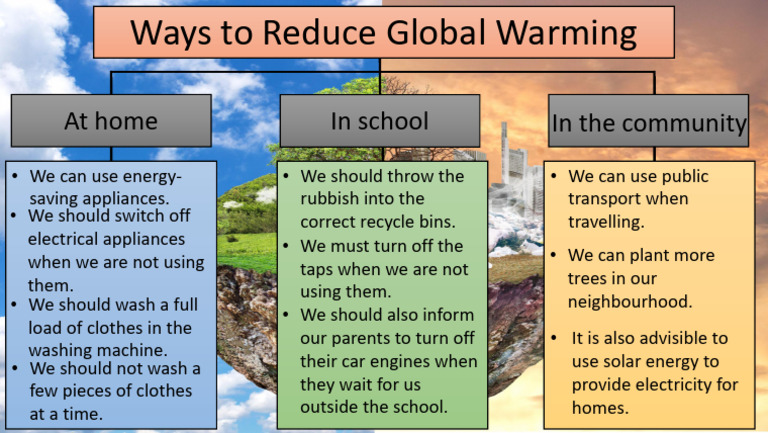In the sprawling narrative of climate action, government policies act as the scaffolding on which a sustainable future can be built. Just as a ship’s captain navigates treacherous waters, policymakers must steer through the turbulent seas of environmental degradation and socio-economic complexities. Without a firm helm, the course toward mitigating global warming could easily veer off into chaos. This piece explores the myriad ways in which government policies can contribute to reducing global warming, providing essential insights into their crucial role in this existential journey.
The most prominent instruments for combating global warming are regulations and standards. Consider these as the boundaries of a vast garden; they delineate areas where progress can flourish and where negligence is not tolerated. For instance, cap-and-trade systems establish a market-driven approach to controlling greenhouse gas emissions. By capping the total level of emissions and allowing businesses to trade permits, companies are incentivized to innovate and reduce their carbon footprints, nurturing a more sustainable economy. These fiscal mechanisms not only hold industries accountable but also stimulate technological advances that can lead to reduced dependency on fossil fuels.
In addition to regulations, investment in renewable energy provides an equally compelling metaphor for growth and renewal. Picture a verdant landscape dotted with solar panels and wind turbines — symbols of a reconstructed energy infrastructure. Government policies can promote such transformations through subsidies, tax credits, and direct funding for renewable energy projects. By prioritizing green technologies over traditional fossil fuels, governments can create an ecosystem ripe for innovation, fostering industries that harbor the potential to reverse the detrimental effects of climate change. This shift does not merely mitigate harm; it can also invigorate economies, creating jobs in rapidly growing sectors.
Equally important is the role of education and public awareness. Think of awareness campaigns as the water that nurtures the seeds of activism and responsibility dispersed throughout society. These campaigns can illuminate the interconnectedness of individual actions with larger environmental impacts. By promulgating environmental literacy, governments can cultivate a populace equipped with the knowledge to advocate for sustainable practices and policies. Schools should be beacons of this knowledge, weaving environmental education into their curricula from an early age, molding conscientious citizens who will carry the torch of sustainability into the future.
Moreover, urban planning and sustainable infrastructure play a pivotal role in addressing climate change on a micro-level. Picture our cities as complex ecosystems where each road, boulevard, and public transport system operates in symbiotic harmony. Governments hold the reins when it comes to implementing zoning laws and urban development guidelines that prioritize green spaces, public transport, and energy-efficient buildings. Smart city initiatives, such as those integrating technology for better resource management, can reduce carbon emissions while simultaneously improving the quality of life for residents. Therefore, thoughtful urban design can be viewed as a tangible manifestation of a commitment to environmental stewardship.
The harmonization of climate action across borders is essential, as global warming knows no political boundaries. Treaties and international accords serve as platforms for collective action and accountability. Governments can leverage diplomacy to forge agreements that not only set ambitious emission reduction targets but also facilitate technology transfer between nations. For instance, the Paris Agreement exemplifies how collaborative commitments can galvanize an entire planet in the fight against climate change. Nations investing in mutual sustainability goals can share expertise and technology, enabling all participants to transition smoothly toward decarbonized economies.
Another crucial aspect is financial incentives for businesses and industries. The metaphorical “carrot and stick” approach exemplifies how funding and subsidies can foster innovation and compliance. By providing financial backing for businesses that demonstrate commitment to sustainability, governments encourage practices that diminish carbon footprints. Green bonds, for instance, allow countries to fund environmentally sustainable projects, creating a compelling financial instrument that attracts both public and private investments. This dual strategy not only helps mitigate global warming but also integrates the concept of environmental accountability into the economic fabric of society.
Accountability and transparency are non-negotiable when it comes to environmental governance. Just as a chef meticulously measures ingredients to create a successful dish, so too must governments quantify their emissions and assess the effectiveness of their initiatives. Regular reporting and independent audits of greenhouse gas emissions can ensure compliance and foster public trust. When citizens see tangible results and transparency in policymaking, they are more likely to engage and support sustainable initiatives. This accountability can invigorate grassroots movements, leading to a collective call for further action and impact.
In summation, effective government policies are integral to navigating the alarming realities of global warming. By adopting a multi-faceted approach, governments can pave a clearer path toward sustainability, introducing regulations that foster emissions reductions, investing in renewable energy, and promoting education and awareness among citizens. As we stand at the precipice of an uncertain future, it is imperative that governments assume their roles as stewards of the Earth, enacting policies that not only mitigate global warming but also inspire a lasting, profound change across the globe. The choices made today will echo through generations, shaping a planet that future inhabitants not only inhabit but revere.








